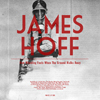 In light of the on-going Occupy Wall Street protests and England's summer riots, James Hoff's single-sided picture disc on PAN feels a little heavier than it otherwise might. Stitched together from various "historic riots," none of which are named, How Wheeling Feels When the Ground Walks Away presents lo-fi crowd roar, chants, guitar solos, breaking glass, and other disobedient noises as the soundtrack to failing systems, desperation, and widespread anger. An audio documentary more than a musical treatment of collective discontent, Hoff captures the anxiety of rebellion and revolt as vividly as any camera could, though its effectiveness might depend on where and how it's heard.
In light of the on-going Occupy Wall Street protests and England's summer riots, James Hoff's single-sided picture disc on PAN feels a little heavier than it otherwise might. Stitched together from various "historic riots," none of which are named, How Wheeling Feels When the Ground Walks Away presents lo-fi crowd roar, chants, guitar solos, breaking glass, and other disobedient noises as the soundtrack to failing systems, desperation, and widespread anger. An audio documentary more than a musical treatment of collective discontent, Hoff captures the anxiety of rebellion and revolt as vividly as any camera could, though its effectiveness might depend on where and how it's heard.
How Wheeling Feels lasts just a brief 19 minutes, but in that time James Hoff subjects his audience to an unnerving racket that is as scary as it is varied. Despite many riots consisting of the same kinds of action, Hoff finds a way to make his material sound distinct throughout, and almost musical. Rhythms and crescendos emerge from contrasting voices and group chanting, moments of shoulder-stressing drama unfold in the sound of crying and unidentifiable explosions, and a common narrative emerges from the prolonged repetition of angry demonstrations and violent events that Hoff either captured or borrowed from elsewhere. The way he layers noise gives the various profanities, sirens, gun shots, car horns, and cheers an added dimension they could never have on the nightly news.
But, no matter how musical the record might be, the emphasis falls squarely on the moods and feelings that pandemonium and disorder create. And since riots are so often the products of injustice, Hoff's album also packs a social and political punch, whether he wants it to or not. I can't listen to this record without thinking about recent headlines or hot topics like class warfare, economic malfeasance, sexual discrimination, and numerous others. Whatever inspires protest, it's looming there in the background, quietly moving the audio along.
James doesn't deliver a judgement on his sounds, though, or if he does, it can't be gleaned from anything in the recording. Sitting at home, listening to the sounds on headphones or cranked up on a good pair of speakers, the sensation I get is more voyeuristic. Playing this record is a bit like reading a history book: there's no avenue into the action the same way there might be, for instance, when listening to an album of improvised music. All the interpretation in the world won't put me into a rioters shoes, which is precisely why I think this piece is best suited for the art gallery in which it was born, or for any public space that would have it. Listening to these sounds out in the open, with other participants, would change the dynamics of the piece entirely. The acoustics would be different, sure, but more importantly a direct symmetry would be drawn between the recorded bedlam, the listener, and all the other people in the room. Instead of just recalling events, the sounds might fill in some very physical blanks and help complete an invisible picture of the space in which they are playing.
But, I'm just speculating. Privately, on record, How Wheeling Feels is uncomfortable and sharp enough; whether it's more immersive or knife-edged in a public place is something only more installations could answer.
samples:
 
Read More

